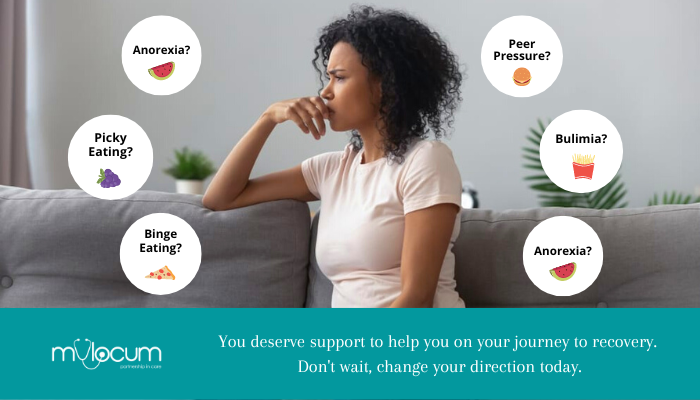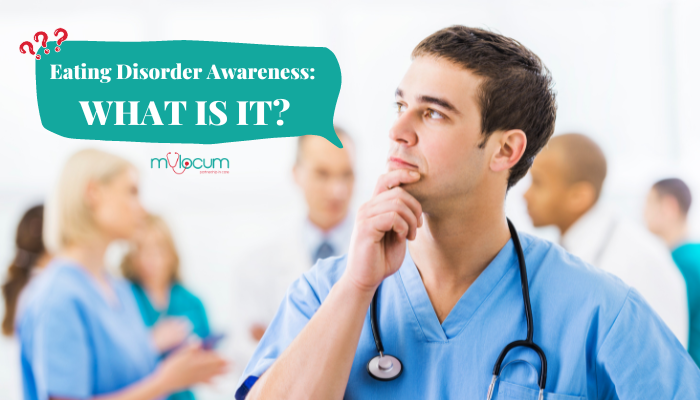It’s Eating Disorder Awareness Week, an annual event celebrated in many countries around the world. This week-long campaign is intended to raise awareness about the serious mental health issues associated with eating disorders and to provide assistance to those who are suffering from these conditions.
Eating disorders are a type of mental illness that can severe physical and emotional damage, and affect people of all ages and genders. This an opportunity to educate people about the signs and symptoms of these disorders. Even when there are treatments and resources available to those affected. The ultimate goal of this week is to reduce the stigma surrounding eating disorders and to promote understanding and support for those who are affected by them.
This is the ICU Nurse (Band 5/6) in Wales, South Wales.
Eating Disorder Awareness UK Statistics
Sadly, eating disorders are on the rise, and they are the leading cause of death among mental health conditions. In the UK, this medical issue has received a lot of attention over the past 30 to 40 years.
Below are some key facts about UK Eating Disorder Statistics:
– Between 1.25 and 3.4 million people in the UK are estimated to be directly affected by eating disorders..
– Around 25% of those affected by an eating disorder are male.
– Eating disorders are most common in individuals between the ages of 16 and 40 years old.
– Eating disorders have the highest mortality rates among psychiatric disorders.
– The average duration of an eating disorder is 6 years.
UK Eating Disorder Statistics:
– There were 19,040 admissions to hospital in the UK related to eating disorders in 2018/19. This is up from 13,885 in the previous financial year.
– 10% of people in the UK suffer from anorexia, bulimia, or binge eating disorder at some point in their lives.
– The entire cost of eating disorders to the NHS is £1.26 billion each year.
– According to NHS figures, 25% of admissions to UK hospitals for eating disorders in 2018/19 were for children under the age of 18.
– Only 15% of respondents in a 2008 survey said UK GPs understood eating disorders and could give helpful support.
Have you ever had a Eating Disorder? If yes, share your story at marketing@gmail.com and get featured on social media platforms.
Anorexia Nervosa statistics:
– Over the course of their lives, between 2 and 4% of women will develop anorexia nervosa.
– With rates rising between the ages of 15 and 19, teenagers are the group most likely to experience it.
– Suicide kills one out of every five people suffering from anorexia.
Bulimia Nervosa statistics:
– Bulimia nervosa is an eating disorder characterised by binge eating, or the consumption of large amounts of food in a single sitting. This is followed by purging like vomiting and excessive exercise.
– Bulimia usually strikes early in life.
– Bulimia has a weighted crude death rate of 1.74 per 1000 person years.
Binge Eating Disorder statistics:
– Around 1.9 percent of European women suffer from binge eating disorder. In comparison, 0.3 percent of men are female.
– Obesity affects 1 out of every 2 people who suffer from bulimia nervosa and a binge eating disorder, which has a high risk of health effects in people.

Where you can get help in the UK
Below are 3 sources and websites where you can get the help you require. We hope you found this information useful.
– Anorexia and Bulimia Care (ABC) – Advice and support for anyone affected by eating problems.
Tel:03000 11 12 13
Email: anorexiabulimiacare.org.uk
Website: Let’s talk about eating disorder
Beat – Offers information and advice on eating disorders, and runs a supportive online community.
0808 801 0677 (adult helpline)
0808 801 0811 (studentline)
Email: beateatingdisorders.org.uk
Website: Beat-Eating Disorder
Overeaters Anonymous Great Britain – Local support groups for people with eating problems.
Website: Overeaters Anonymous Great Britain
References:
-
Source: ‘’The UK eating disorder statistics are derived from data published by the National Institute for Health and Care Excellence (NICE), Beat, and Anorexia and Bulimia Care.’’
- Schmidt, U., Eating disorders in the UK: service distribution, service development and training, in College Reports, R.C.o. Psychiatrists, Editor 2012, Royal College of Psychiatrists.
- Galmiche M, Déchelotte P, Lambert G, Tavolacci MP (2019) Prevalence of eating disorders over the 2000-2018 period: a systematic literature review. Am J Clin Nutr. 109(5), 1402-1413.
- Hay P, Girosi F, Mond J (2015) Prevalence and sociodemographic correlates of DSM-5 eating disorders in the Australian population. Journal of Eating Disorders, 3: 19.
This is the Registered General Nurse (Band 5 -7) we currently have in East Midlands, Hinchingbrooke .

